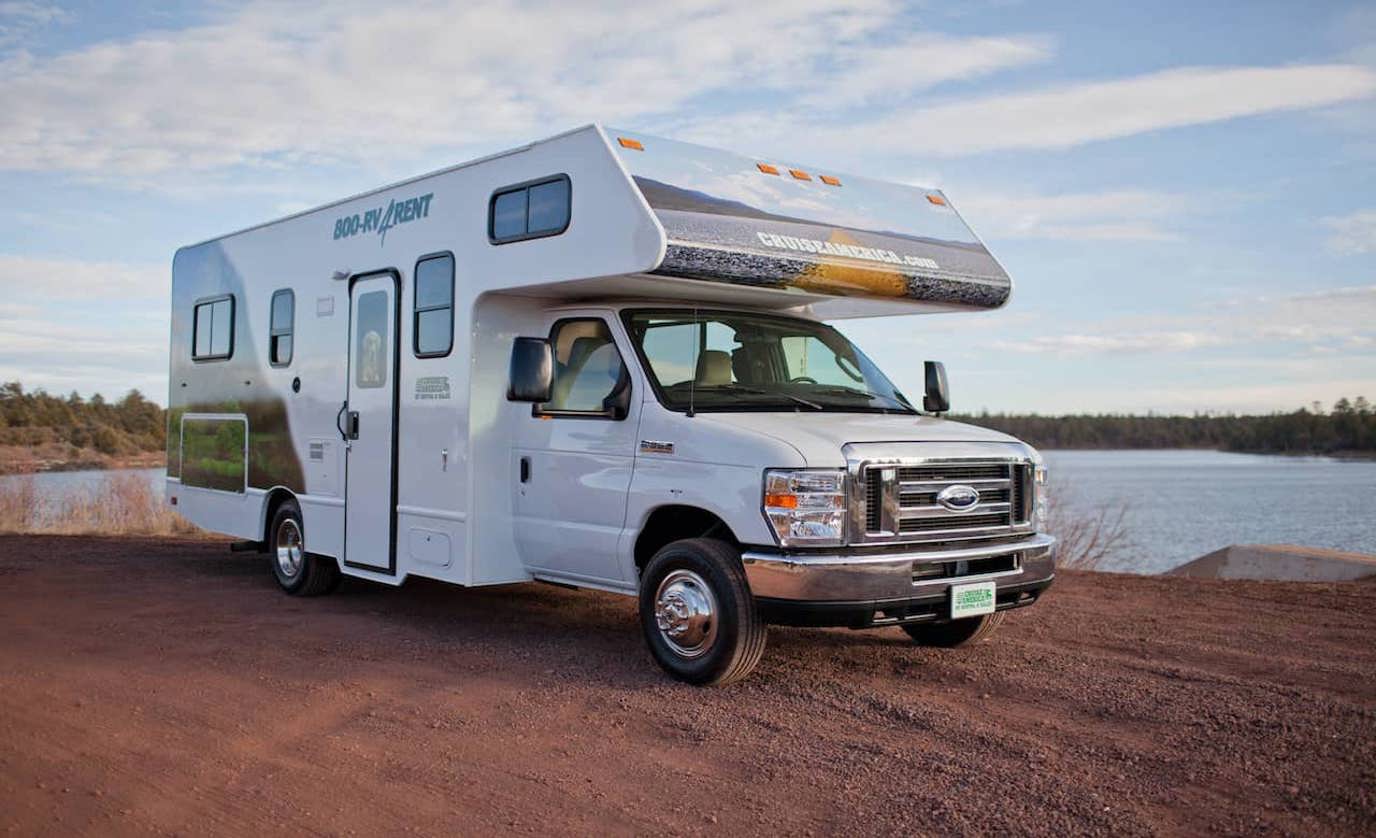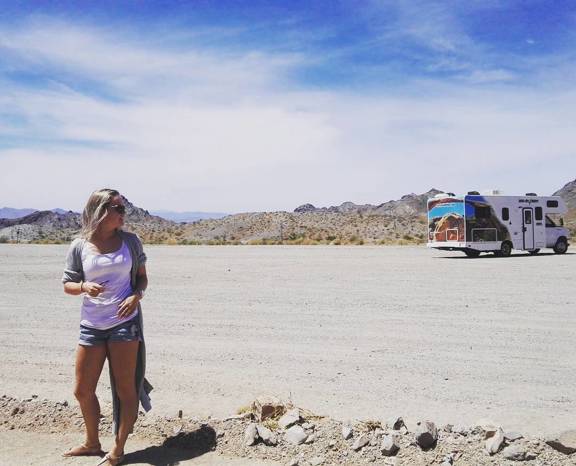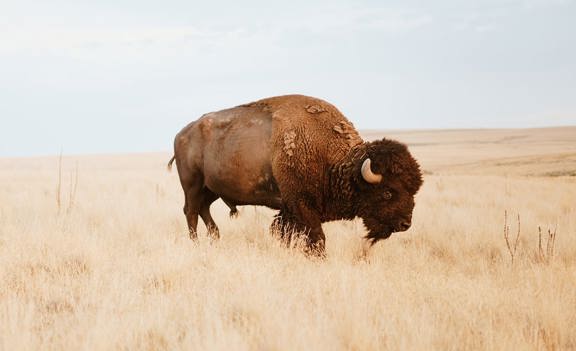
The motorhome industry wasn't always as lavish and technologically advanced as it is today. In fact, it took centuries for the RV industry to be where it is in the modern era. In the past, only a few hundred motorhomes were manufactured each year. Now millions are sold in the US and globally annually. Not to mention thousands of people rent RVs from companies like Cruise America to live out their road trip dreams. To put it simply, an RV is far more than an automobile. It's a dream-seeking haven and home away from home for many people.
From the 1800s and early 1900s, motorhomes quickly became popular as enthusiasm for the RV lifestyle gained traction — not even the Great Depression could slow its evolution. This led to rapid development in the structural design and creative development of many models throughout RV history.
Yet, much has transpired throughout RV history to get modern motorhomes to evolve into homes on wheels, complete with all the amenities and features casual campers and full-time RV life enthusiasts could need.
In our blog, we will detail the comprehensive timeline of RV history. So buckle up and double down as we tell you everything you need to know.
What Were The First RVs? – 1800s Gypsy Wagons
Some might dispute this historical account of the 1800s gypsy wagons being the first ever non-motorized motorhomes. Yet, for many, these ingenious small houses on wheels were the first RV invention that inspired the structural advances of later motorhome generations in the US.
Gypsy wagons were used during the 1800s in Europe. These wagons would allow nomadic gypsies to live on the road while constantly moving. In the US, according to the Smithsonian, the first RV was built in the likeness of a gypsy wagon. This motorhome was built onto a vehicle in 1904, featuring an ice box, radio, and incandescent lights. In addition, its believed to have slept four people in bunks.
Even though these motorhomes provided travelers minimal comfort and few amenities and features, they were a modern marvel at the time, providing a good night's rest and a place to cook one's meal.
RV History Through The Decades
Now that you have a better idea about the first RVs to grace our shores, it's time to learn more about RV history through the decades. So look below to see six decades' worth of RV history, including modern times, and how current motorhomes have become marvels to behold.
The 1910s – The Pierce-Arrow Touring Landau
Unsurprisingly with the advent of automobiles, the RV landscape transformed. When cars began to become popular and car sales skyrocketed in the early 1910s, the population quickly became enamored by the motorhomes that sprung up in their wake.
Although not technically RVs, many of the cars of the time were customized to include bunks, lockers, water tanks, and ice boxes built into trailers and towables that were hitched to vehicles. Unfortunately, unlike modern cars, the vehicles of the 1910s could not tow more than a few hundred pounds, and this constraint had lasting implications on RV design for years into the future.
Yet, what was the first RV to appear to the public as a commercialized model for sale? This honor belongs to the 1910 Pierce-Arrow Touring Landau. This motorhome debuted at the Madison Square Garden auto show, and it can be considered a Class B campervan because of its pioneering design.
According to historical accounts, the Pierce-Arrow Touring Landau had a sink that could be folded down to allow for more space and a back seat that could fold into a bed. In addition to this campervan, in the 1910s, there was also a camper truck known as the Lincoln truck that was custom outfitted and used for annual camping trips by Henry Ford, Thomas Edison, John Burroughs, and Harvey Firestone.
Moreover, there was another incredibly important RV to be designed. In 1915 the Gypsy Van was constructed by the Gas-Electric Motor Bus Company for the Conklin family for their journey to San Francisco.
This cleverly designed motorhome was 25 feet long and weighed 8 tons. It was equipped with incandescent lighting, an electrical generator, pullman-style sleeping berths, a full kitchen, convertible sofas, numerous small appliances, a concealed bookcase, and a roof garden.
The 1920s – The Torpedo Car Cruiser Teardrop Trailer
During the Great Depression, times were tough, but this didn't stop many people from trying to live a little through the use of motorhomes. In fact, during the 1920s, numerous people began living in their cars to try and negate some of the negative effects of the Great Depression.
Interestingly, during the 1920s, one of the first RV camping clubs was created — the Tin Can Tourist. Those who belonged to this club would fearlessly travel across unpaved roads and enjoy dinners of heated tin cans as they traveled from one destination to another, spending time around different campfires.
Additionally, 1929 saw one of the first-ever teardrop trailers built that birthed the brand Airstream. Wallace Merle Byam created this trailer and handbuilt it. It was known as the Torpedo Car Cruiser, and its plans were sold with similar kits created around it and sold to others.
Moreover, the first-ever Airstream was also built in 1929. This ingenious motorhome was built over a Model T until the design was refined and made to resemble a surrounded teardrop trailer.
The 1930s – The Covered Wagon
The next development of the motorhome in RV history came during the 1930s. In 1930 the “Covered Wagon” was introduced at the Detroit Auto Show. This covered wagon was created as a more refined design to the traditional camping trailers of the 1920s.
It featured solid walls and was custom-built by a carpenter for Arthur G. Sherman, a bacteriologist, and president of a pharmaceutical company. Sherman had decided to build this motorhome after he was left with poorly constructed camping apparatus that left him and his family soaked after a thunderstorm.
In addition to having solid walls, the Covered Wagon also featured a masonite body and was as wide as the family cars of the time. Also included in its construction were four windows for adequate ventilation, built-in furniture, storage spaces, and cupboards. Even though the asking price for this motorhome was $400, which was expensive for the time, Sherman was able to sell 118 units after the show.
Yet, surprisingly, the Covered Wagon was one of the bestselling trailers in 1936 in America. This trailer sold about 6,000 units and grossed more than $3 million, and it was the largest trailer made in the US. This travel trailer marked the end of tent-style trailers for many years and began the solid body construction trend in the RV industry.
The 1940s – The Palace Expando
During the 1940s, the RV industry experienced its first true period of decline because of the war. This is because trailers were needed for war efforts and less for recreational travel and living.
However, this does not mean that RV manufacturing stayed stagnant for a long time.
Instead, manufacturers used their creativity to build RVs that aided the war efforts. For example, some motorhome producers began making prisoner transports, mobile hospitals, and even morgues. In addition, during the war, the US military used motorhomes as “revolutionary trailer configurations” known as the Palace Expando to house enlisted men and their families.
Besides being used for the war efforts, many celebrities started using motorhomes for their needs. For example, famed Hollywood producer Howard Hughes had a mobile dressing room built from eight motorhomes.
These motorhomes had everything he needed, including a shower, bath, refrigerator, air conditioners, and stove, which was impressive in the 1940s. Of course, it wasn't a functioning and drivable RV unit, but it worked as temporary housing and changing rooms.
Many others also began experimenting with RV builds and created their own models on Chevrolet chassis during the 1940s.
The 1950s – The Executive Flagship
In the 1950s, RVs became more popular outside of war efforts because many returning soldiers and young families were looking for ways to travel cheaply. By the 1950s, most of the big-name brands in the RV industry, like Winnebago, Ellsworth Coach, Airstream, and Chinook, were in the business, manufacturing new and improved motorhome models regularly.
Unlike in the previous decades, many motorhomes produced in the 1950s began to feature bathrooms, plumbing, and refrigeration. In addition to having more features, the motorhomes in the 1950s became bigger and more spacious, with many housing luxury furnishings and appliances. This decade saw such growth in the industry that the camper lifestyle became ingrained in American society.
Surprisingly, there were even models manufactured that included separate private bedrooms and upstairs and downstairs floorplans that are not common in today's era of RV manufacturing. Even more advanced styles of motorized motorhomes were available for luxury buyers. One of these models was known as the Executive Flagship RV.
This motorhome was constructed in 1952, and it had an astonishing 65-foot-long length and sat on ten wheels. It had two upstairs bedrooms and a master bedroom downstairs and could sleep eight people comfortably.
Additionally, this fully drivable two-storied luxury RV had two separate bathrooms, wall-to-wall carpeting, a 21-inch television, and an impressive portable pool with its own diving board! As unbelievable as that sounds, it's true. Unsurprisingly, this model retailed for about $75,000, which was considered a small fortune at the time.
The 1960s To 1970s – The Good Sam Club And Mass Production
Until the 1960s, most motorhome entrepreneurs had focused on converting vehicles and constructing trailers, but the 1960s saw massive expansion into more creative RV pursuits.
More and more people — RV manufacturers included — began breathing life into buses and vans, which is when the first campervans and class A and C motorhomes started becoming a reality.
Interestingly during the 1960s and 1970s, hippies and families owned more motorhomes than others. This is because RVs served as temporary motorhomes for many people.
During this time, hippies and families would drive to music festivals, national parks, and various campgrounds. Many of these activities are immensely popular today, and most manufacturers thank the 60s and 70s for making camping and travel a popular and exciting pursuit for RV owners.
Capitalizing on the market and this increasing popularity, Winnebago began mass-producing a huge selection of quality motorhomes at inexpensive prices in 1967 and onwards. This further led to more people entering the RV lifestyle.
Another contributing aspect that made the 1960s a decade to remember for RVs is the founding of the Good Sam Club. This respected motorhome club was founded in 1966. In the decades since, this club has grown to more than 1.8 million members benefiting from the various advantages associated with being a member of this club.
RVs Today
Nowadays, RVs have become even more popular, especially with more people embracing RV living and frequent camping trips from one campground to the next. With the way technology continues to advance and be incorporated into motorhomes, it's likely that the world will continue receiving more modern units that keep up with the times.
Every year motorhome manufacturers create new models with improved features, amenities, and more creative and convenient floorplans. Better motorized and non-motorized models are also created that cater to niche markets and luxury buyers. There is also a motorhome for everyone's budget, with numerous motorhome producers creating affordable product lines that are not only cost-effective but also value for money.
Today's motorhomes are outfitted with full bathrooms, kitchens, washers, dryers, sound systems, pantry space, stoves, microwaves, ovens, and everything else you could think of. In fact, many nowadays come equipped with multiple entertainment features like Wi-Fi and cable.
You'll likely also have no trouble finding one that meets your size needs since they come in all shapes and sizes from Class A, B, and Cs to toy haulers, fifth wheels, travel trailers, and pop tops. Yet, one day, even today's modern motorhomes will earn their place in RV history, and newer, more improved models will grace storefronts and online inventories.
Regardless of what the future holds, it's interesting to note that RV advancements will continue to make waves and stoke public interest. After all, how can people turn a blind eye when modern RVs are essentially fully equipped homes on wheels capable of making travel dreams a reality?
Book An RV Today With Cruise America To Be a Part of RV History
RV history is immersive, undoubtedly interesting, and impressive, with much happening over the last 100 years. We've only scratched at the surface to give you this comprehensive timeline of RV history detailing everything you should know before you explore deeper. With RV history spanning so many decades, it's easy to be curious about what more is in store, and it's natural to want to be a part of it.
Luckily, you can be a part of modern RV history by experiencing your travels in a rented motorhome. At Cruise America, we have a wide variety of RV rentals to choose from that you can book and use to embark on your planned trips. Contact us here and let us help you carve out your own history in one of our comfortable models with all the amenities you could need on the road at your fingertips.





